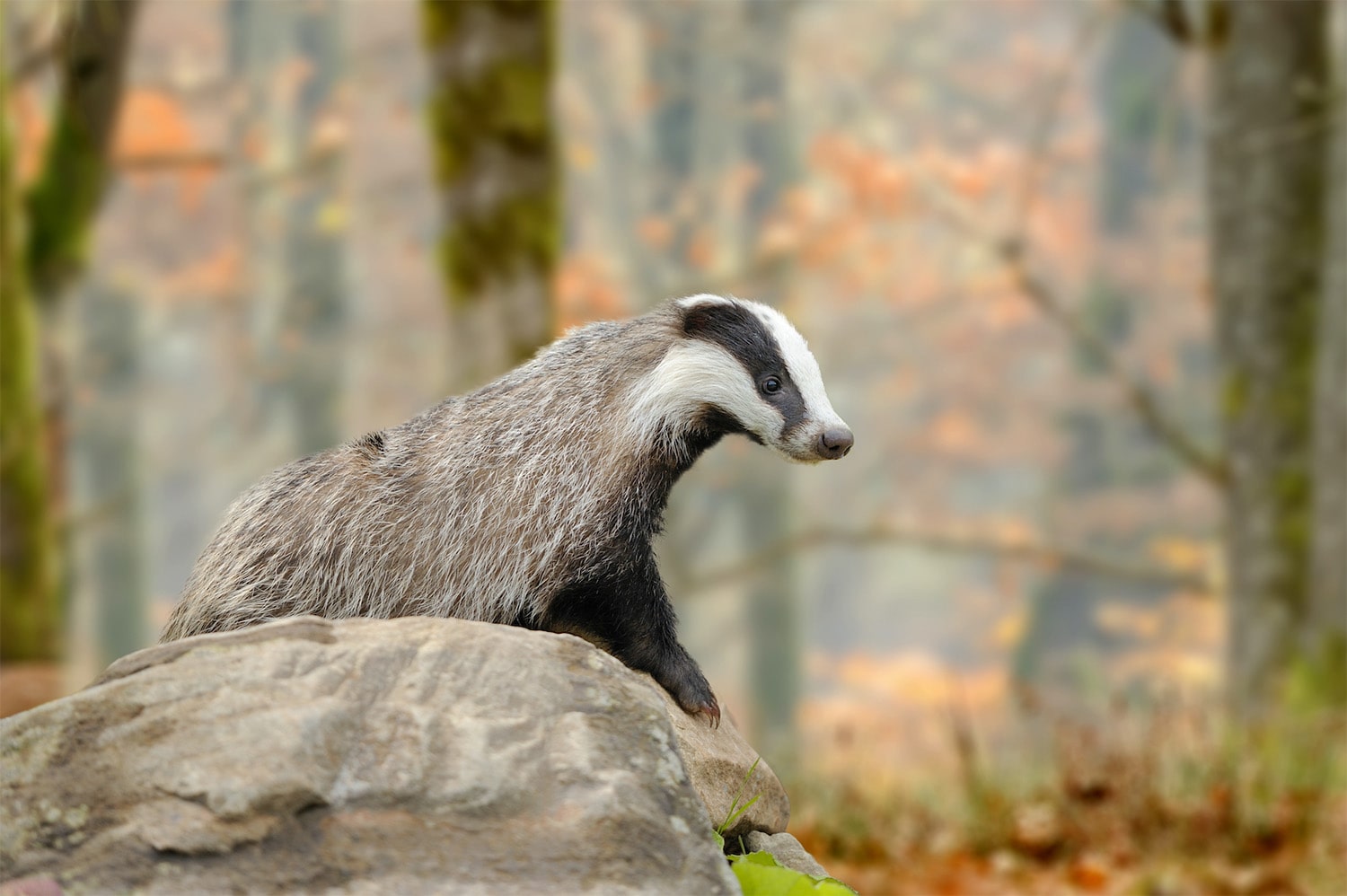
28 interesting facts about badgers
- 👁️ 270
Badgers are fascinating creatures that belong to the family Mustelidae, which also includes otters, weasels, and wolverines. Known for their stocky bodies, striking facial markings, and burrowing habits, badgers are found in a variety of environments across the globe, from North America to Europe and Asia. These nocturnal mammals lead intriguing lives, marked by their strong digging abilities, social structures, and versatile diets. Despite their often solitary nature, badgers play significant roles in their ecosystems, contributing to soil aeration and controlling populations of pests and rodents. Here are 28 interesting and informative facts about badgers that highlight their unique characteristics and behaviors.
- There are 11 species of badgers, divided into three subfamilies: Melinae (Eurasian badgers), Mellivorinae (Honey badger), and Taxideinae (American badger).
- Badgers have elongated bodies and wide, flat heads with short legs, which make them well-adapted to digging.
- The European badger, also known as the Eurasian badger, has distinctive black-and-white striped facial markings.
- Honey badgers, found in Africa and Asia, are known for their toughness and have been documented attacking animals much larger than themselves, including lions.
- American badgers are primarily found in the Great Plains region of North America.
- Badgers live in underground burrows called setts, which can be centuries old and used by multiple generations.
- A single sett can have multiple entrances and chambers and extend up to 10 meters below the ground.
- Badgers are omnivorous, feeding on a diet that includes worms, insects, small mammals, fruits, and roots.
- The honey badger’s diet also includes honey, and they are known to be immune to bee stings.
- Badgers have strong, sharp claws used for digging setts and for defense against predators.
- The European badger is one of the largest; adults can weigh over 30 pounds (about 14 kilograms).
- Badgers can run up to 19-20 miles per hour (30-32 kilometers per hour) in short bursts.
- Honey badgers have a reversible anal gland that they use to mark territory and release a foul smell as a defense mechanism.
- Badgers are primarily nocturnal, emerging from their setts at night to forage for food.
- European badgers are highly social animals, living in groups called clans, which can contain up to 15 individuals.
- The gestation period for a badger can vary between species, but European badgers have a delayed implantation, meaning the fertilized egg can remain dormant for months before developing.
- Cubs are usually born in the spring and stay with their mother in the sett for several months before venturing outside.
- The honey badger’s skin is so thick and tough that it can withstand machete blows, arrows, and spears.
- Badgers are known to share their burrows with animals of other species, including rabbits and foxes.
- In folklore and literature, badgers are often portrayed as wise, solitary, and gruff characters.
- The European badger is a protected species in many countries due to declining populations from habitat loss and persecution.
- Honey badgers are listed as “Least Concern” by the IUCN Red List, despite facing threats from habitat destruction and hunting.
- American badgers are solitary animals and have territories that they mark and defend from other badgers.
- In the UK, badgers are the main wildlife reservoir of bovine tuberculosis, leading to conflict between conservation efforts and agricultural interests.
- Badgers have been known to team up with coyotes in hunting; the badger digs up prey that tries to escape underground, while the coyote catches those that run.
- The digging activity of badgers helps to aerate the soil and increase nutrient mixing.
- In some cultures, badgers are considered symbols of persistence and determination due to their burrowing habits and tenacity.
- The name “badger” comes from the French word “becheur” meaning “digger”.
Badgers are remarkable for their adaptability, resilience, and the diverse roles they play in ecosystems around the world. From the solitary American badger to the social European badger and the fearless honey badger, each species brings a unique set of behaviors and traits to the rich tapestry of wildlife. Despite facing threats from human activities, badgers continue to thrive in their natural habitats, demonstrating the importance of conservation efforts to ensure their survival. As we learn more about these intriguing animals, we gain a greater appreciation for the complexity of the natural world and the interconnectedness of all its inhabitants.
Badgers are fascinating creatures that belong to the family Mustelidae, which also includes otters, weasels, and wolverines. Known for their stocky bodies, striking facial markings, and burrowing habits, badgers are found in a variety of environments across the globe, from North America to Europe and Asia. These nocturnal mammals lead…